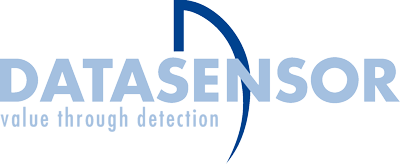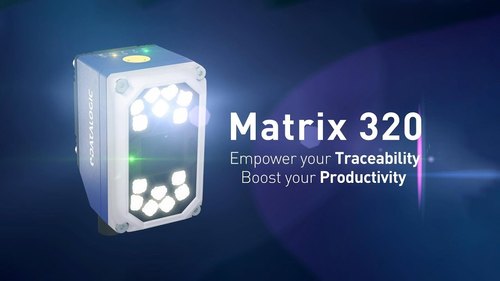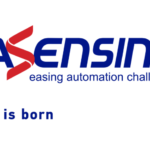How AI, Machine Vision, Smart devices, and Optimized Pixel Density can reduce traceability costs and manual labor expenses
Advancing Technologies
- Machine Learning
- Vision Detection
- Smart Scanning
- Optimized Aspect Ratio
AI Prevents Problems

AI can automatically do this classification along with aggregation and reporting. This is the key to quickly helping understand major No Read causes and promptly define corrective action.
One example of implementing AI to prevent No Read is the No Read Classifier Engine.
This is software Datasensor has added to the Web Sentinel™ Plus platform. This engine automatically processes images related to No Read, classifying them into different categories. Using this information, reports, and queries can be run on the database. For example, a trend report can show the hourly trend of No Reads on a certain day.
Drilling down into the report could show several parcels of the same shape, from the same customer with labels placed across the seam. Rather than have this continue, corrective action with that customer can be issued. Without the automated classification, this issue may not have ever been identified and the manual work from No Reads would have continued.
There are many ways AI can be used to prevent No Reads. Corrective action, preventative maintenance, and other activities can be done as the AI system sees No Reads and categorizes them. All of this is done in real-time.
AI analysis makes improvements possible without spending large amounts of time manually checking parcel by parcel, image by image. Even at a very low throughput of 4,000 parcels per day, you would need to spend multiple hours per day for manual classification to get to the root of a problem. This technology has a great benefit in keeping automation running and workers focused on real high-value tasks instead of manual rework.
Vision Detection Supply chain applications have become more complex as items of varying shape, size, and type are being purchased and fulfilled through e-commerce. The cardboard box and polybag are not the only type of packaging moving through supply chains. As e-commerce grows, so do the shapes and sizes of parcels. Large or irregularly shaped, non-conveyable items require manual measurement, sorting, and data collection. A new data collection system based on using dynamic vision detection called Mass Flow Detection can automate and eliminate the need for manual sorting for these large, irregularly shaped, non-conveyable items.
Vision systems deliver the ability to collect and do more with data. For example, a parcel with a missing label may still be identified through its shape, color, or optical characteristics. Vision systems can process data by applying algorithms that allow them to detect and decipher items in 3D.
The Mass Flow Detection System can determine if an image shows one irregularly shaped item or multiple parcels touching. The system provides volume data for each item, using advanced real-time image analysis to recognize and separate items. Multiple scanners generate hundreds of images, which are stitched together to provide a high-resolution top view. Scanners collect barcode data from each item, and a color camera takes a multi-sided view of each item running over the belt. The color JPEG image is saved with a bounding box, created by 3D measurement data. The image and the bounding box provide proof of the object’s condition. All the data is aggregated creating a complete picture of the item’s physical characteristics (size, shape, weight), traceability data (barcode), and condition.

Getting Smart with Barcode Detection
Technology advances are driving the creation of smarter devices. This is particularly true for data capture devices, specifically barcode imaging scanners. Most scanners are considered dumb devices, they have one function which they are specifically designed to do. To do this function they require other ancillary devices such as power supplies, proximity sensors, cabling, switches, and programmable logic controllers (PLCs).
A new generation of Smart Scanners is emerging. One example is the AV900 from Datasensor, a Smart Scanner that can be programmed directly and can operate autonomously without much of the ancillary devices traditional scanners require. Smart Scanners reduce the system cost of traceability systems in two ways. First, their built-in intelligence reduces the components required to operate. Second, this same intelligence when coupled with higher-resolution imagers reduces the number of scanners required and makes the solution more effective with enhanced features.
For example, fast and wide conveyor systems would require two standard barcode scanners with 5 megapixels of resolution. These devices would need dimensioners, power supplies, proximity sensors, cabling, switches, or Programmable Logic Controllers (PLCs) to ensure that the right parcel gets to the correct location. A Smart Scanner such as the AV900 delivers 9 megapixels of a resolution allowing one device to replace the traditional units. Importantly, the intelligence within the Smart Scanner directly increases its functionality and effectiveness with new features such as three different focusing modes:
- Fixed focus
- Dynamic focus
- Sequential focus
Higher Accuracy with Barcode Scanners
While the high resolution remains an important specification in many industrial applications, how that resolution is utilized can be even more important. Most barcode scanners have a 4:3 aspect ratio, creating a field of view that resembles a square. If one of these scanners is positioned to scan a 2-foot conveyor covering the full width, the field of view is 2 feet x 1.5 feet, with pixels evenly spaced over that area. Most barcodes are detected close to the starting edge of the field of the view, meaning that many of the available pixels go unused, creating serious system inefficiency and problems for barcode detection.










